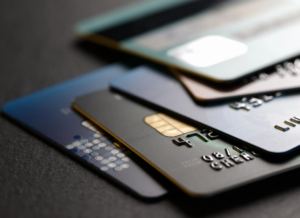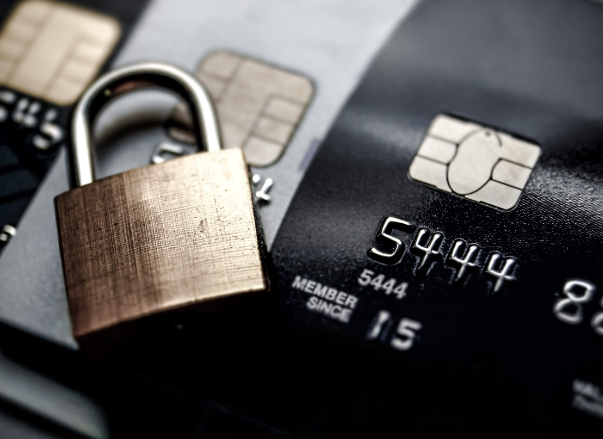In an era where digital transactions dominate, ensuring the safety of your credit cards is paramount. This comprehensive guide explores key strategies and practices to protect your financial information and maintain a secure credit card experience.

Understanding Credit Card Safety
The Importance of Credit Card Safety
Credit cards are convenient financial tools, but their usage comes with inherent risks. Understanding the significance of credit card safety is crucial for safeguarding personal and financial information from unauthorized access and fraudulent activities.
Common Threats to Credit Card Security
Various threats pose risks to credit card safety, including phishing scams, identity theft, skimming devices, and data breaches. Recognizing these threats empowers cardholders to adopt proactive measures against potential vulnerabilities.
Best Practices for Credit Card Safety
1. Regularly Monitor Your Statements
Frequent monitoring of credit card statements allows you to quickly identify any unauthorized or suspicious transactions. Regularly reviewing statements online or through mobile apps enhances your ability to spot discrepancies promptly.
2. Enable Transaction Alerts
Take advantage of transaction alerts provided by credit card issuers. These alerts can notify you of transactions exceeding a specified amount, online purchases, or international transactions, offering real-time visibility into your card activity.
3. Secure Your Physical Card
Protecting your physical credit card is as important as safeguarding its digital details. Keep your card in a secure wallet or cardholder, and avoid leaving it unattended. Report lost or stolen cards immediately to mitigate potential risks.
4. Use Secure Websites for Online Transactions
When making online purchases, ensure the website is secure by checking for “https://” in the URL and a padlock icon in the address bar. Avoid entering credit card information on unsecured or suspicious websites.
5. Implement Strong Passwords
For online banking and credit card accounts, use strong, unique passwords. Combine uppercase and lowercase letters, numbers, and symbols to create robust passwords that are challenging for unauthorized individuals to decipher.
6. Regularly Update Personal Information
Maintain up-to-date contact information with your credit card issuer. This ensures you receive important notifications and allows the issuer to reach you promptly in case of any suspicious activities.
7. Be Cautious with Personal Information Sharing
Exercise caution when sharing credit card information, especially over the phone or through emails. Legitimate organizations will not request sensitive information through insecure channels.
8. Keep Anti-Malware Software Updated
Regularly update and use reputable anti-malware and antivirus software on your devices. This helps protect against malware that could compromise your credit card information stored on your computer or smartphone.
Advanced Security Features
1. EMV Chip Technology
Credit cards equipped with EMV (Europay, Mastercard, Visa) chip technology provide an additional layer of security. The embedded microchip generates unique codes for each transaction, reducing the risk of counterfeit card usage.
2. Two-Factor Authentication (2FA)
Opt for credit cards and online banking services that offer two-factor authentication. 2FA adds an extra layer of security by requiring verification through a secondary method, such as a one-time code sent to your mobile device.
3. Virtual Credit Card Numbers
Some credit card issuers offer virtual credit card numbers for online transactions. These temporary, disposable numbers add an extra layer of security and prevent the exposure of your actual credit card details.
Responding to Suspected Fraud
1. Report Lost or Stolen Cards Immediately
In case of a lost or stolen credit card, report the incident to the issuer immediately. Most issuers provide 24/7 customer service to assist with such emergencies.
2. Dispute Unauthorized Transactions
If you identify unauthorized transactions on your credit card statement, dispute them promptly. Credit card issuers typically investigate and may refund the amount if the dispute is valid.
3. Place a Fraud Alert or Credit Freeze
If you suspect identity theft or fraud, consider placing a fraud alert or credit freeze on your credit reports. This adds an extra layer of protection by requiring additional verification before new credit is extended in your name.
Educational Resources for Cardholders
1. Credit Card Issuer Education
Take advantage of educational resources provided by credit card issuers. Many issuers offer guides, videos, and FAQs to help cardholders understand and implement best practices for credit card safety.
2. Financial Literacy Programs
Participate in financial literacy programs or workshops that focus on credit card safety. These programs often cover a range of topics, including fraud prevention, responsible card usage, and dispute resolution.
Emerging Trends in Credit Card Safety
1. Biometric Authentication
Biometric authentication, such as fingerprint or facial recognition, is gaining prominence in credit card security. Some cards and payment systems now incorporate biometric features for enhanced user verification.
2. Blockchain Technology
Blockchain technology, known for its secure and decentralized nature, holds potential applications in enhancing credit card security. The implementation of blockchain can reduce the risk of data breaches and unauthorized access.
Conclusion: A Secure Financial Future
Maintaining credit card safety is an ongoing commitment that requires a combination of vigilance, proactive measures, and leveraging advanced security features. By adopting best practices, staying informed about emerging trends, and responding swiftly to potential threats, cardholders can enjoy the convenience of credit cards while safeguarding their financial well-being in an increasingly digital world.

